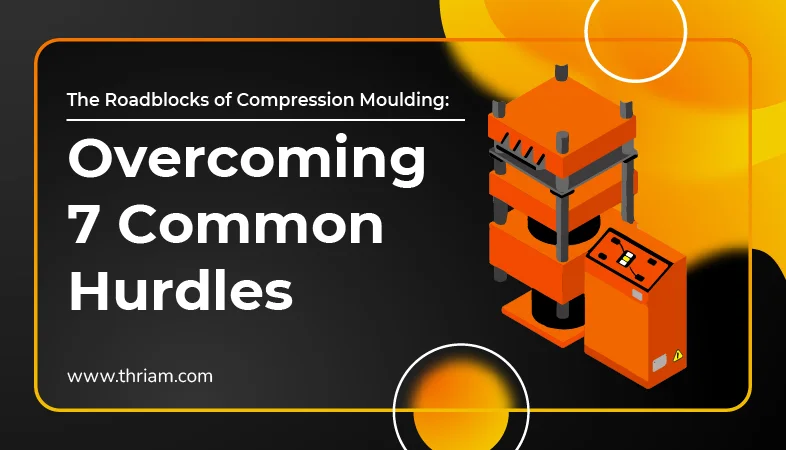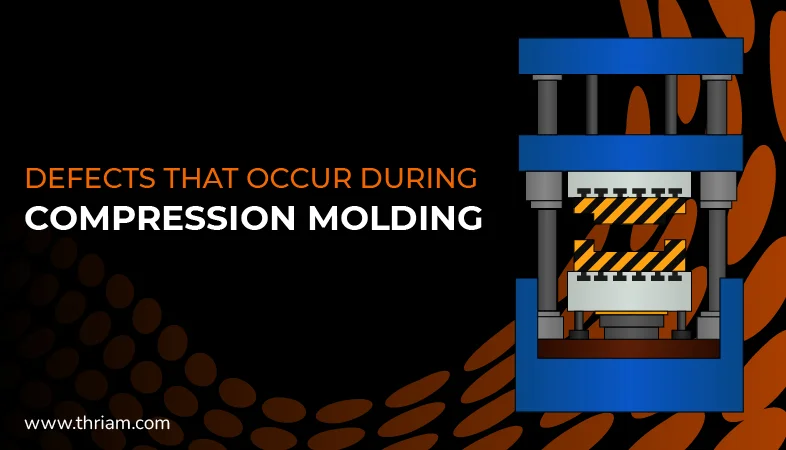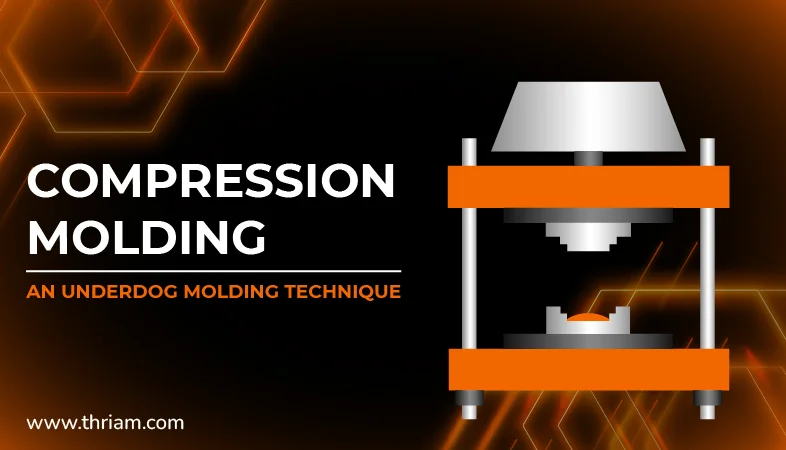Why Compression Molding Remains the Best Method for Manufacturing Bakelite Products
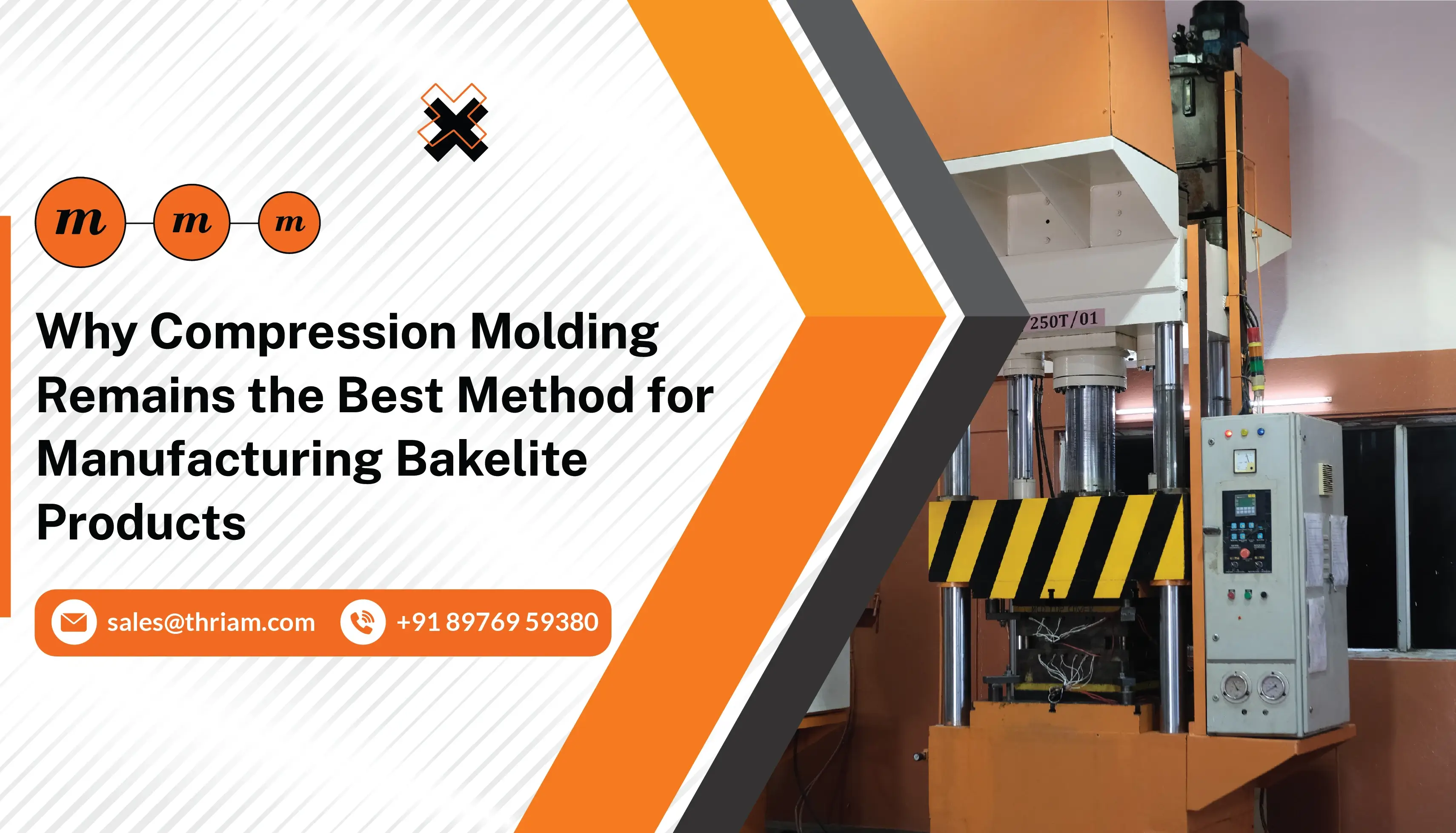
Bakelite, the first synthetic plastic, revolutionized manufacturing in the early 20th century. Its unique properties – heat resistance, electrical insulation, and durability – made it ideal for a wide range of applications, from electrical components to kitchenware. While numerous plastics and manufacturing processes have emerged since Bakelite’s invention, compression molding remains the most effective and often preferred method for producing high-quality Bakelite products. This comprehensive blog post explores the reasons behind this enduring preference, delving into the material properties of Bakelite, the specifics of the compression molding process, and the advantages it offers for Bakelite manufacturing.
Understanding Bakelite: A Phenolic Resin
Bakelite is a thermosetting phenol formaldehyde resin. This means that once it is cured (through a chemical reaction involving heat and pressure), it cannot be melted and reshaped. This characteristic distinguishes it from thermoplastics, which can be repeatedly melted and reformed. Key properties of Bakelite include:
- High Heat Resistance:Bakelite can withstand high temperatures without melting or deforming, making it suitable for applications involving heat exposure.
- Excellent Electrical Insulation:Bakelite is a non-conductive material, making it ideal for electrical components and insulators.
- High Strength and Rigidity:Bakelite is a strong and rigid material, offering good dimensional stability and resistance to deformation under load.
- Chemical Resistance:Bakelite is resistant to many chemicals, making it suitable for use in harsh environments.
- Durability and Hardness:Bakelite is a hard and durable material, resistant to scratches and wear.
These properties make Bakelite suitable for applications where heat resistance, electrical insulation, and durability are paramount.
The Compression Molding Process: Ideal for Bakelite
Compression molding is a manufacturing process where a preheated molding material (in this case, Bakelite resin) is placed in an open, heated mold cavity. The mold is then closed, and pressure is applied to force the material to fill the cavity. Heat and pressure are maintained for a specific curing time, allowing the Bakelite to undergo a chemical cross-linking reaction and solidify into a rigid, thermoset part. The mold is then opened, and the finished part is ejected.
Several key aspects of compression molding make it particularly well-suited for Bakelite:
- Uniform Pressure Distribution:Compression molding ensures uniform pressure distribution throughout the mold cavity. This is crucial for Bakelite, as it ensures consistent density and prevents voids or weak spots in the finished product.
- Control of Heat and Cure Time:Compression molding allows for precise control of temperature and cure time. These parameters are critical for achieving the desired cross-linking reaction in Bakelite, ensuring optimal material properties.
- Suitability for Complex Shapes:Compression molding can produce complex shapes and geometries, making it suitable for a wide range of Bakelite products.
- Cost-Effectiveness for High-Volume Production:While tooling costs can be significant, compression molding becomes highly cost-effective for medium to high-volume production runs, which is often the case for Bakelite products.
- Minimal Material Waste:Compared to other molding processes, compression molding generates minimal material waste, as the pre-measured charge is directly placed into the mold cavity. This is important for cost efficiency and sustainability.
Why Compression Molding is Superior for Bakelite Compared to Other Processes:
While other molding processes like injection molding and transfer molding exist, they are generally less suitable for Bakelite for the following reasons:
- Injection Molding:Injection molding involves melting the plastic material and injecting it into a mold cavity under high pressure. This process is generally not suitable for thermosets like Bakelite because the high shear forces and rapid injection can cause premature curing or degradation of the material. Additionally, the complex gating systems required for injection molding can create weld lines in the finished part, which can weaken its structural integrity.
- Transfer Molding:Transfer molding is a hybrid process where the material is heated in a separate chamber before being transferred into the mold cavity. While somewhat better suited for thermosets than injection molding, transfer molding still involves some level of material flow through runners and gates, which can lead to inconsistencies in material density and potential for defects. Compression molding's direct placement of material eliminates this issue.
Case Study Example (Hypothetical):
Let's imagine a case study where a car manufacturer needed a lightweight, yet robust battery housing for their new EV model. They opted for a compression molded SMC (Sheet Molding Compound) housing. The benefits included:
Specific Advantages of Compression Molding for Bakelite Manufacturing:
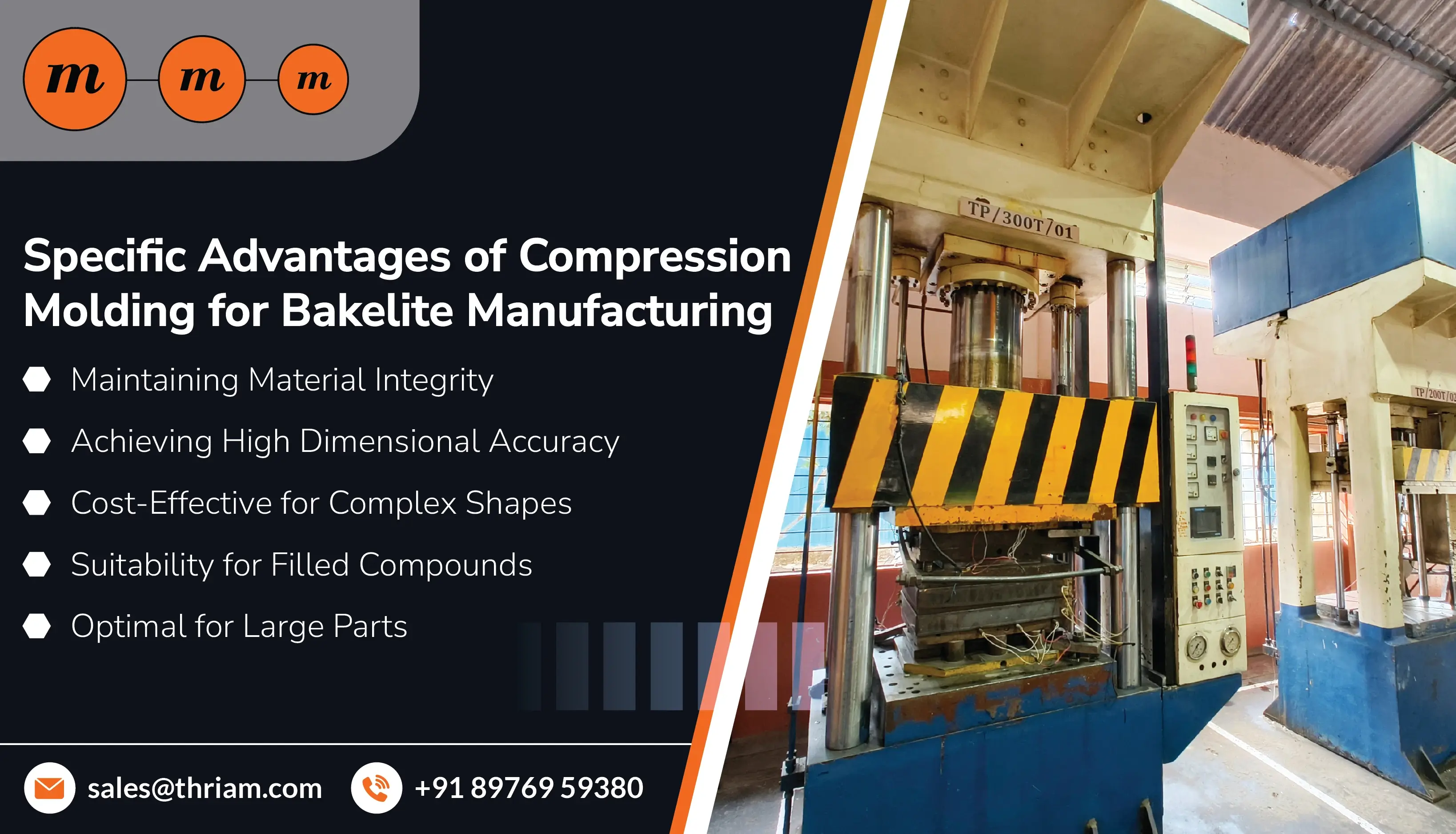
- Maintaining Material Integrity:The gentle flow of material under pressure in compression molding minimizes shear stress and prevents premature curing or degradation of the Bakelite resin, preserving its inherent properties.
- Achieving High Dimensional Accuracy:The uniform pressure distribution in compression molding ensures consistent material density and minimal shrinkage, resulting in high dimensional accuracy and tight tolerances in the finished parts.
- Producing Parts with Excellent Surface Finish:Compression molding can produce parts with smooth, high-quality surface finishes, often eliminating the need for secondary finishing operations. This is particularly important for aesthetic applications of Bakelite.
- Cost-Effective for Complex Shapes:Compression molding can produce complex shapes and geometries with undercuts and intricate details, often at a lower cost than other manufacturing processes.
- Suitability for Filled Compounds:Bakelite is often filled with various materials, such as wood flour, mineral fillers, or fibers, to enhance its properties. Compression molding is well-suited for processing these filled compounds, as the gentle flow of material prevents segregation or uneven distribution of the fillers.
- Optimal for Large Parts:Compression molding is particularly advantageous for manufacturing large Bakelite parts, as it can apply uniform pressure over large surface areas, ensuring consistent density and preventing warpage.
Applications of Bakelite Manufactured by Compression Molding:
Compression molding continues to be used to produce a wide range of Bakelite products, including:
- Electrical Components:Switches, sockets, insulators, and other electrical components requiring high electrical insulation and heat resistance.
- Kitchenware:Handles for pots and pans, knobs, and other kitchen utensils requiring heat resistance and durability.
- Industrial Components:Gears, bearings, and other industrial parts requiring high strength and wear resistance.
- Automotive Components:Distributor caps, ignition components, and other automotive parts requiring heat resistance and electrical insulation.
- Decorative Items:Vintage radios, telephones, and other decorative items that showcase the unique aesthetic of Bakelite.
Conclusion
While the world of plastics has expanded dramatically since the invention of Bakelite, compression molding remains the most effective and often preferred method for its manufacture. The process's ability to maintain material integrity, achieve high dimensional accuracy, produce excellent surface finishes, and handle complex shapes and filled compounds makes it uniquely suited for Bakelite's specific properties and applications. As long as there is a need for durable, heat-resistant, and electrically insulating components, compression molding will continue to play a vital role in the production of high-quality Bakelite products. This enduring partnership between material and manufacturing process is a testament to the ingenuity of early plastics engineering and its lasting impact on modern manufacturing.
